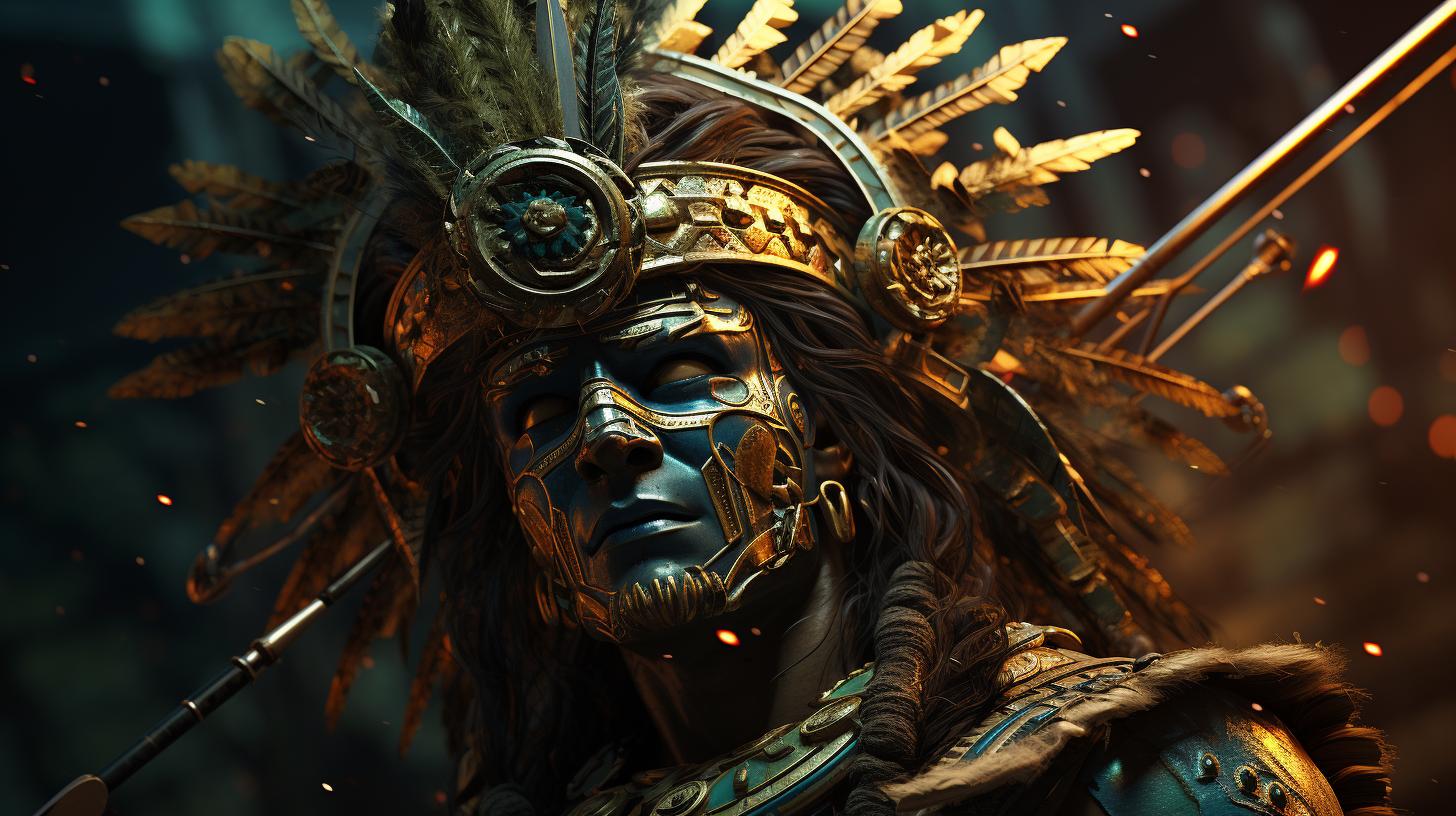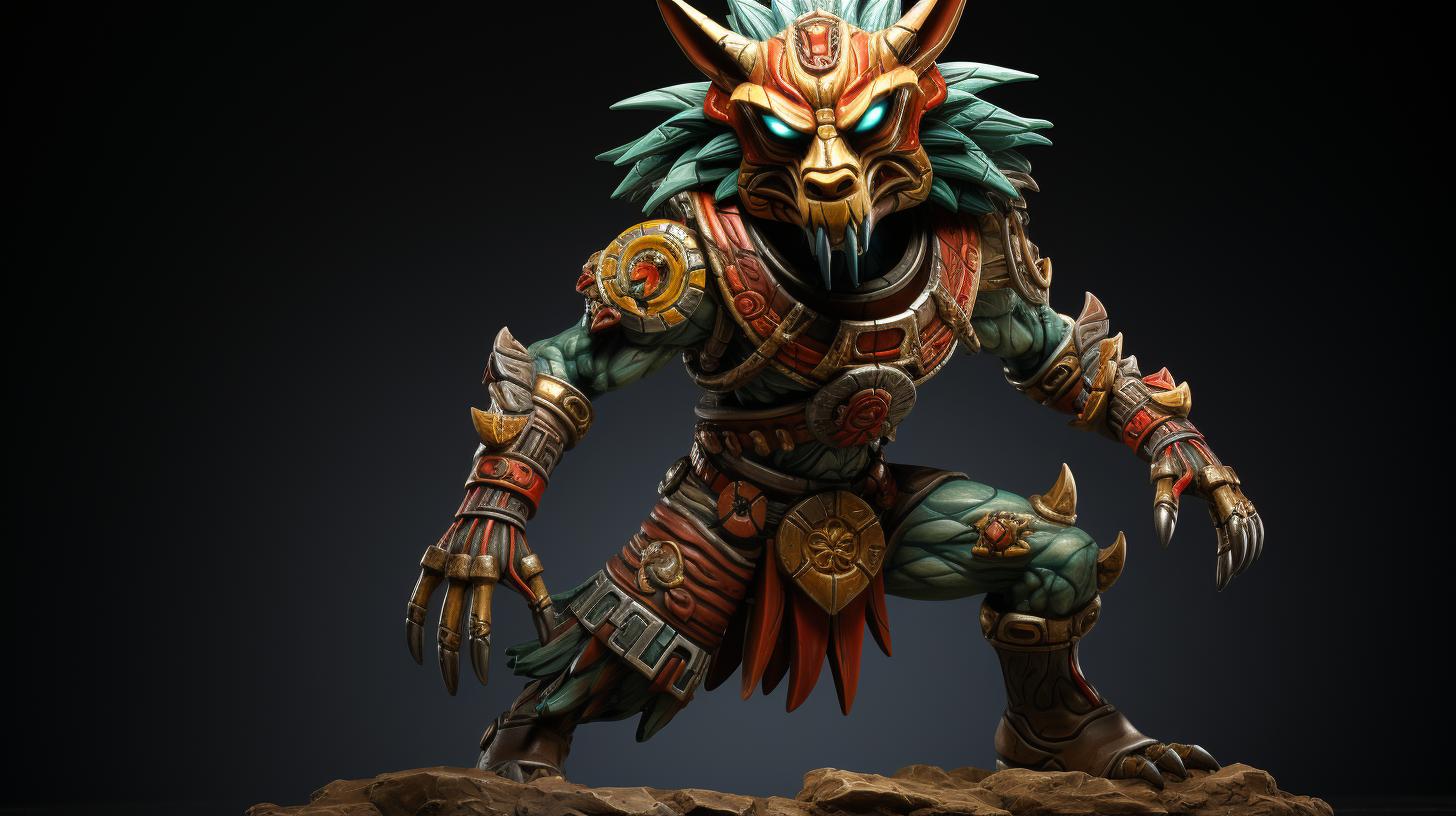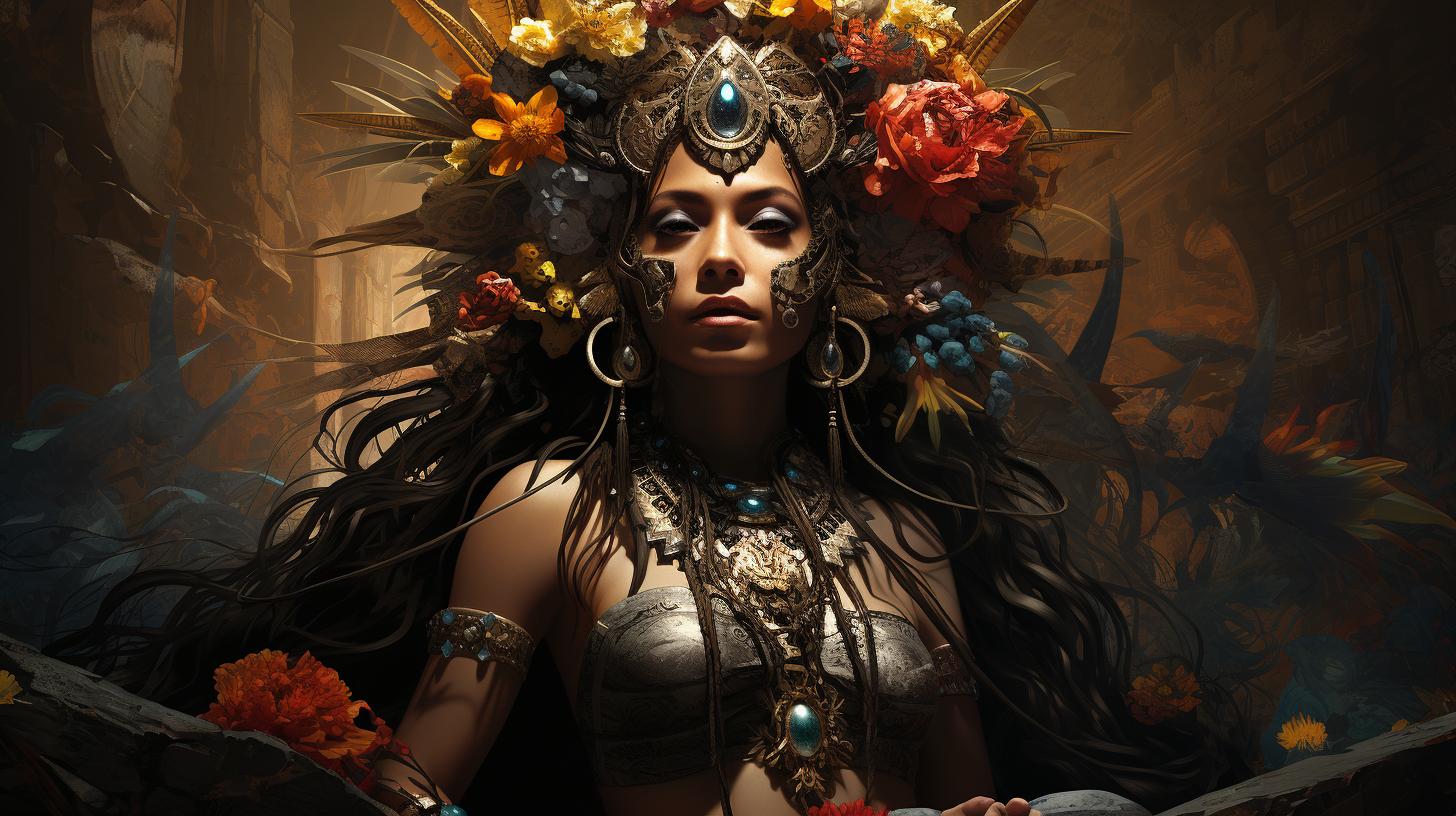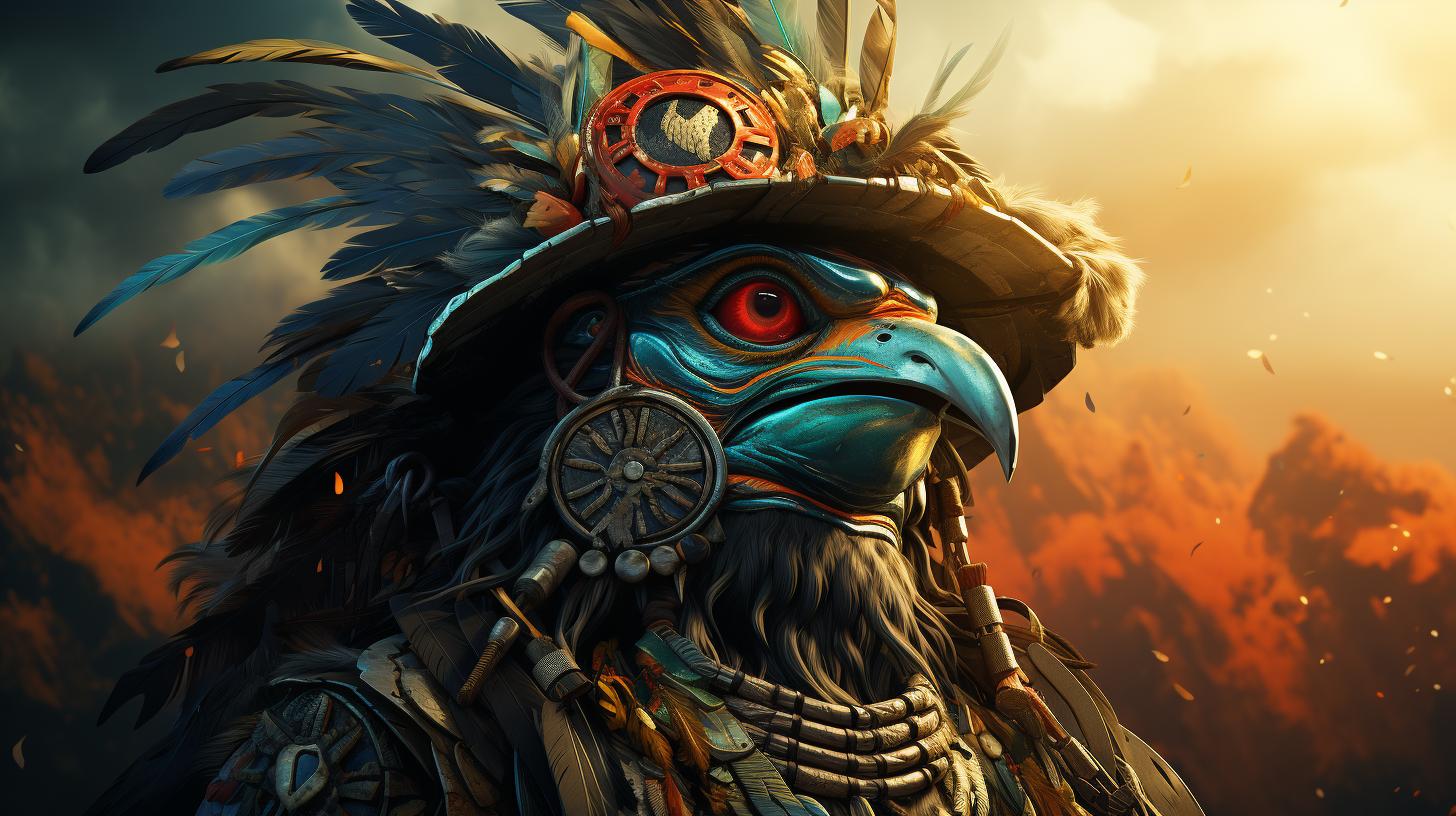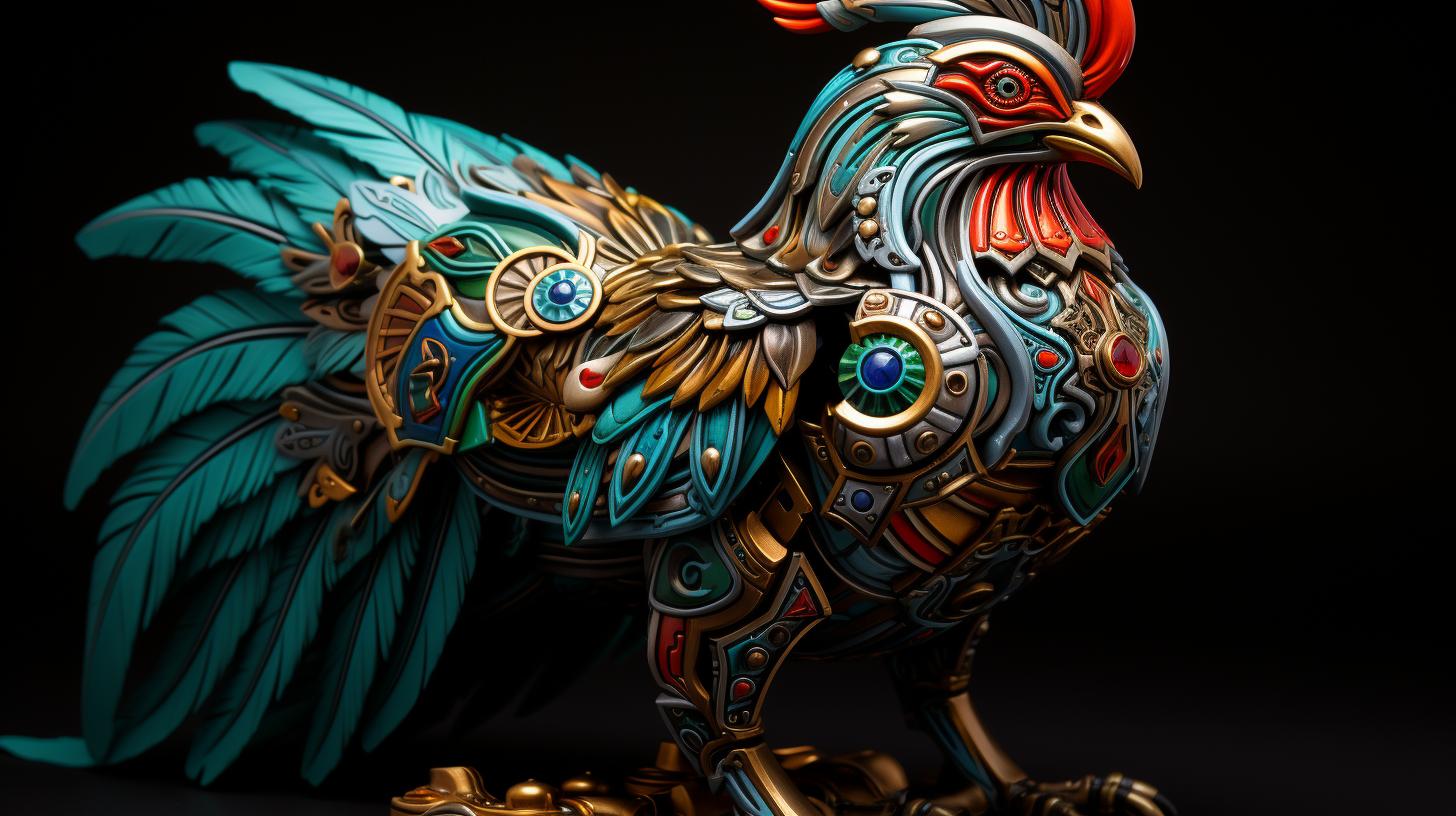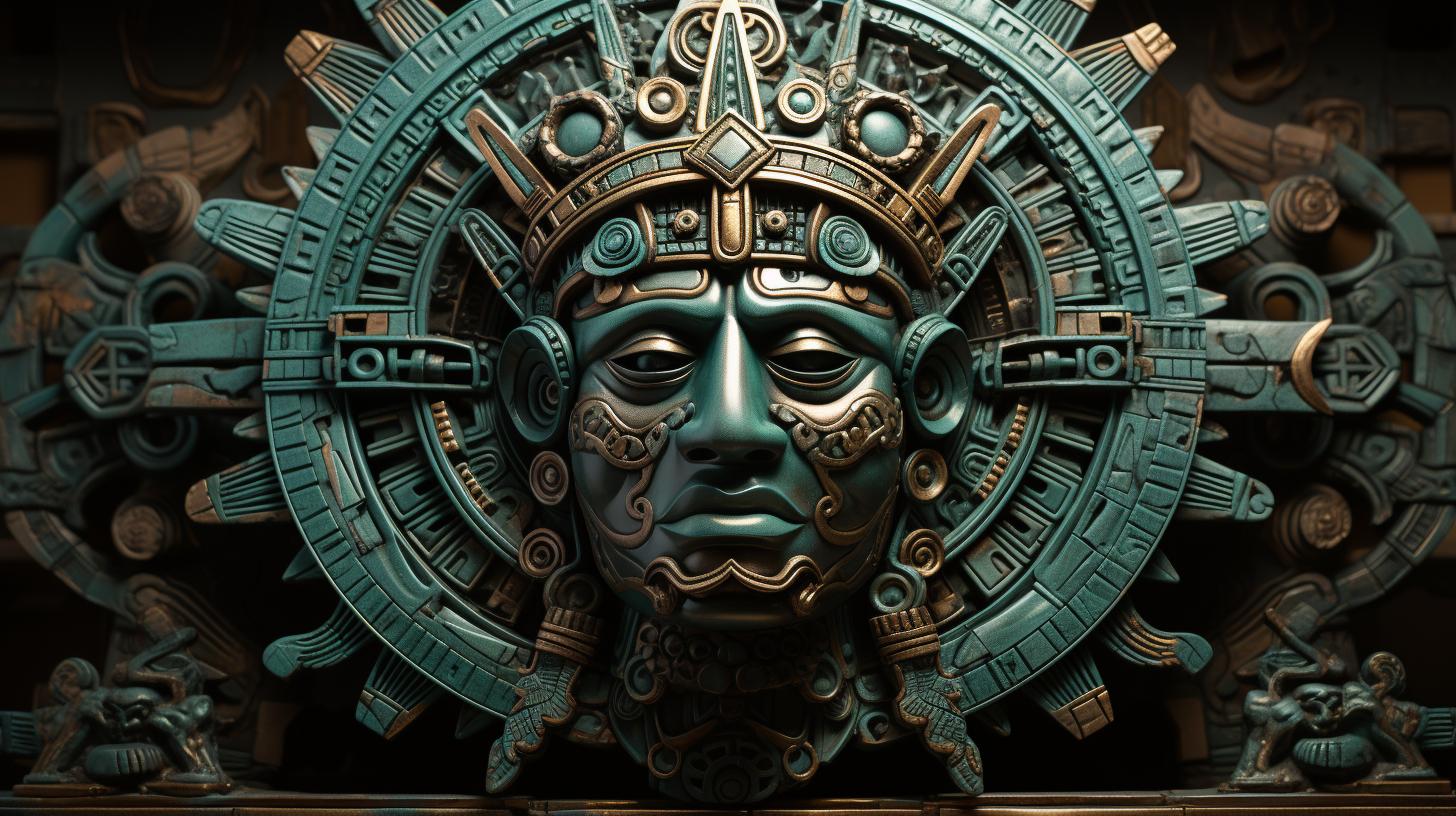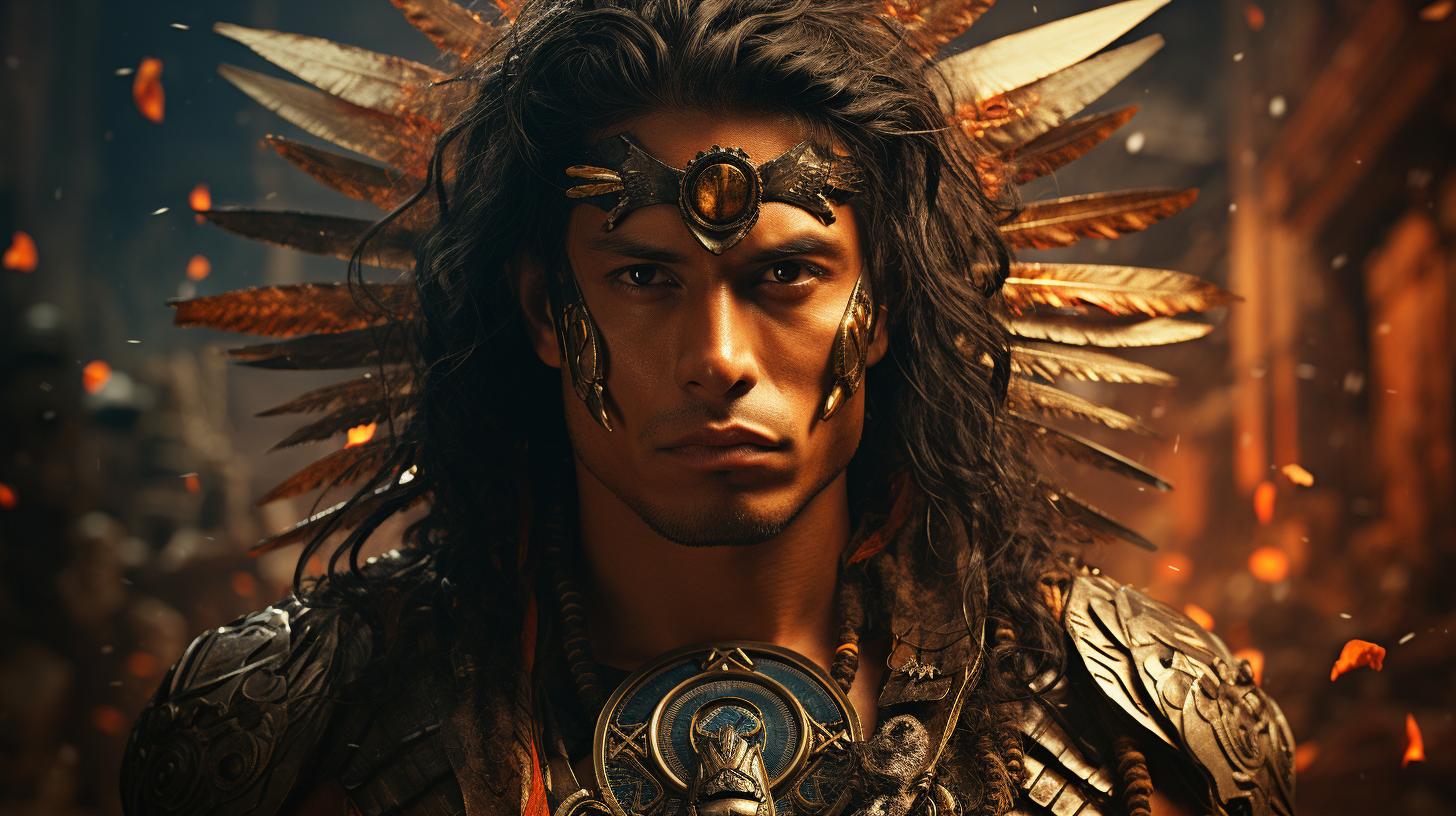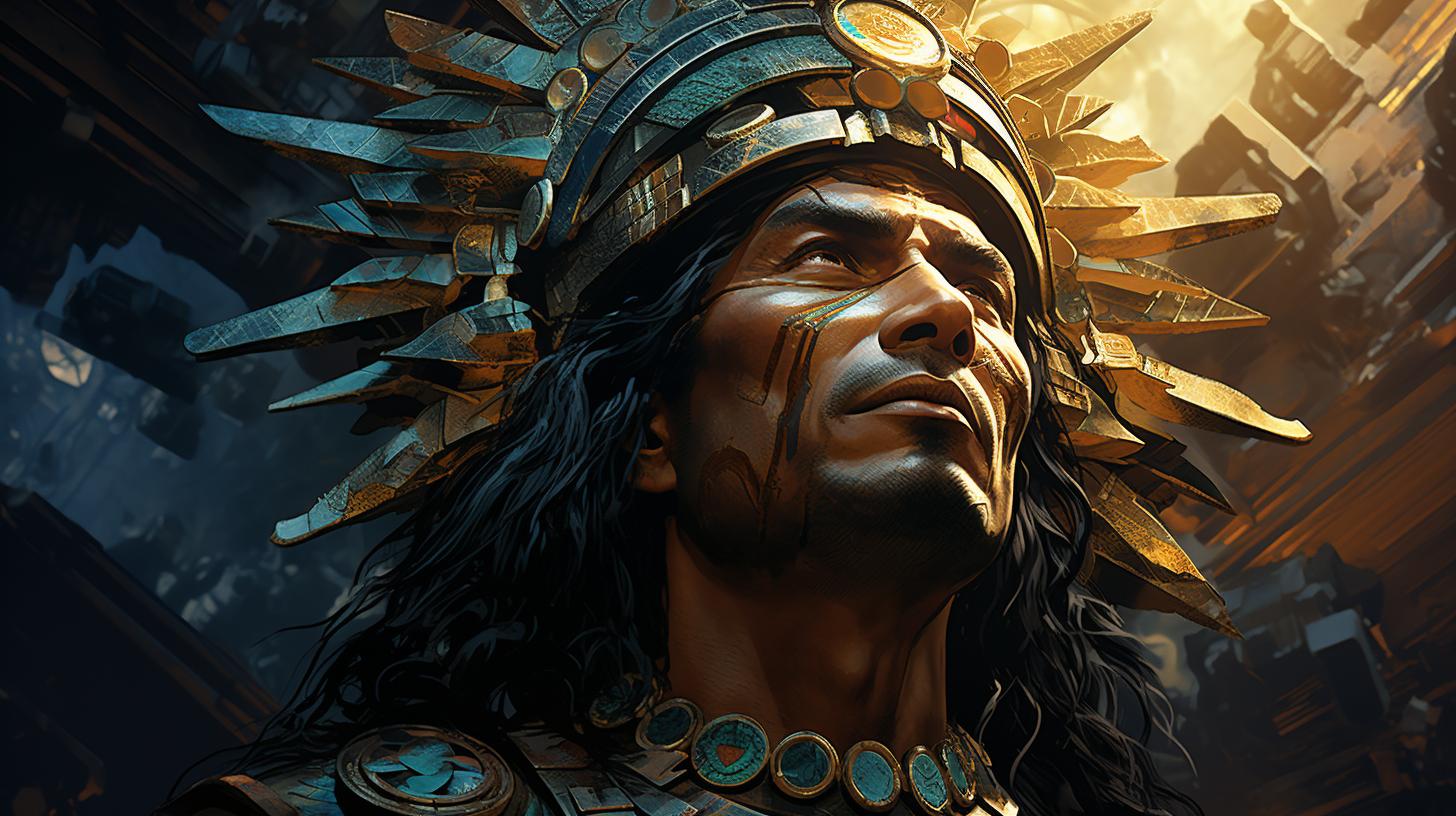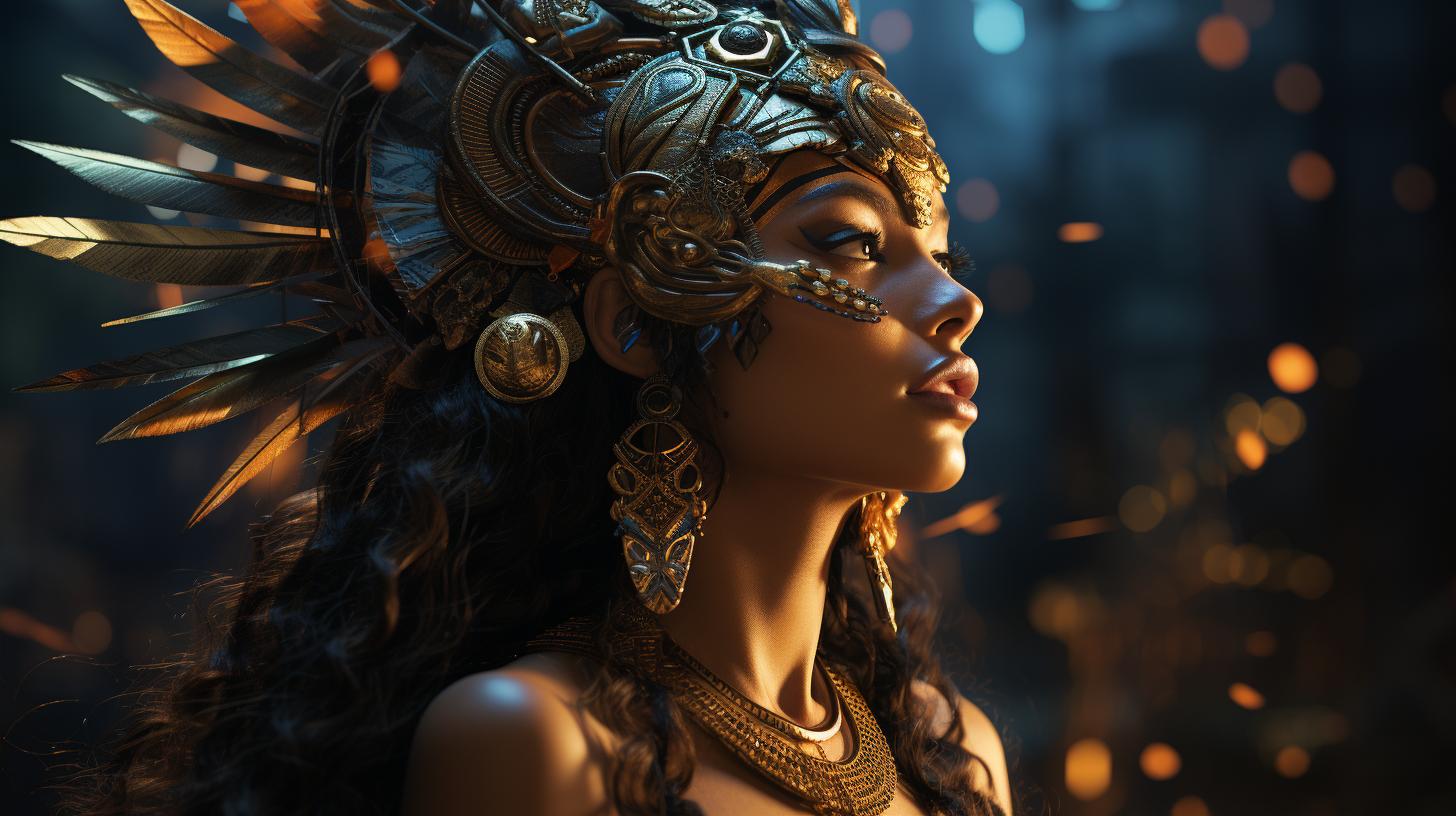Camaxtli Aztec God: Unveiling the Secrets of the Ancient Aztec Deity
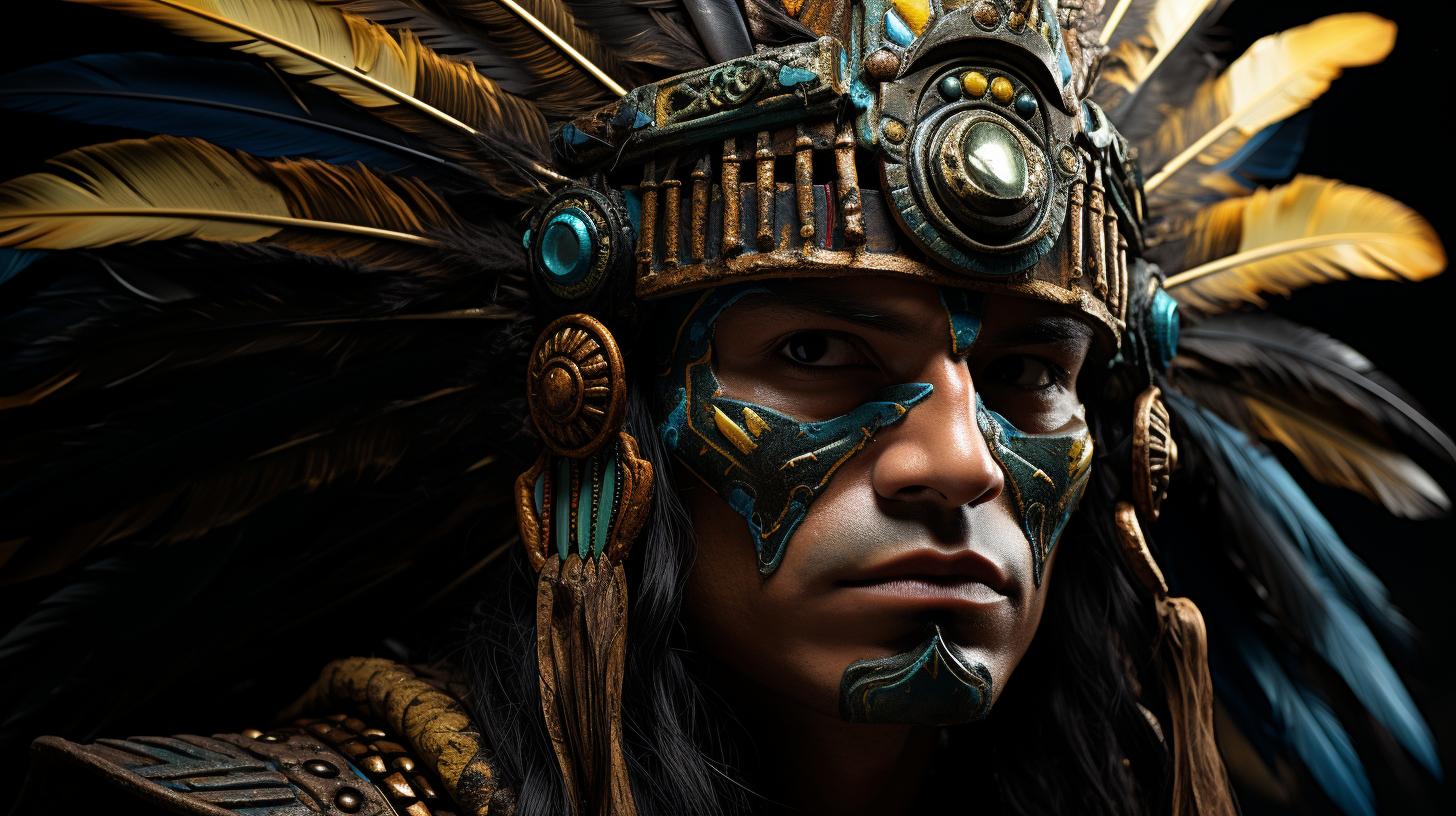
Camaxtli, the Aztec god of hunting and warfare, holds a significant place in Aztec mythology. Associated with the Milky Way, Camaxtli is revered as a central deity by various Mesoamerican cultures.
This article explores the origins, iconography, and relationships of Camaxtli with other Aztec gods. It delves into Camaxtli’s role in war, hunting, and his connection to the Milky Way. Additionally, it examines the worship, rituals, and artistic representations dedicated to this powerful deity.
Furthermore, this piece highlights Camaxtli’s enduring influence on modern Mexican culture.
The Origins of Camaxtli in Aztec Mythology
The mythology of the ancient Aztecs is rich with tales of gods and their origins. Understanding the story of Camaxtli requires delving into the broader creation narrative of the Aztec gods.
From this larger context, Camaxtli emerges as a significant figure, a father, and a god in his own right, with a pivotal role in the cosmology of the Aztecs.
The Creation Story of the Aztec Gods
The Aztec creation story tells of the birth of the gods from the primordial deities, Tonacatecutli and Cihuacoatl. These ancient gods, often depicted as aged and wise, gave birth to four sons, including Camaxtli.
Each son possessed unique attributes and powers, setting the stage for the diverse pantheon of deities in Aztec mythology.
Camaxtli: A Father and a God
Camaxtli, born from the union of Tonacatecutli and Cihuacoatl, held a special place within the Aztec pantheon. As a father, he played a crucial role in shaping the lineage of gods and their descendants.
As a god himself, Camaxtli was revered for his association with hunting, warfare, and celestial bodies, making him a central figure in the lives of the Aztec people.
The Role of Camaxtli in Aztec Cosmology
Camaxtli’s significance reached beyond his position as a father and a god.
He occupied a crucial place in Aztec cosmology, representing the power and influence of celestial forces. Camaxtli’s role in the cosmos tied him closely to the broader understanding of the Aztec worldview, where the heavens, stars, and celestial bodies held profound symbolic meaning.
The Iconography and Symbolism of Camaxtli
Camaxtli, the Aztec god of hunting and warfare, is represented in distinct visual imagery that carries deep symbolism.
The Visual Representation of Camaxtli
Camaxtli is often depicted wearing a black mask over his eyes, with red and white stripes painted on his body. This distinctive representation is shared with other deities like Tlahuizcalpanteuctli and Itzpapalotl. These visual characteristics facilitate Camaxtli’s identification, alongside his hunting equipment.
The Significance of the Black Mask and Red Stripes
The black mask worn by Camaxtli is believed to represent his association with the underworld and his ability to navigate between different realms. The red and white stripes symbolize the duality of life and death, representing the constant cycle of creation and destruction.
Camaxtli and His Hunting Equipment: Bow, Arrows, and Net
A prominent aspect of Camaxtli’s iconography is his hunting equipment, which consists of a bow and arrows. The bow represents his strength and precision in hunting, while the arrows signify his ability to strike down targets with lethal accuracy.
Additionally, Camaxtli is often depicted carrying a net or a basket to capture and carry the slain prey, emphasizing his role as the god of hunting.
Camaxtli’s Relationship with Other Aztec Gods
Camaxtli, the powerful Aztec god, is intricately connected with other deities in Aztec mythology.
This section explores his relationships with Tezcatlipoca, Quetzalcoatl, and his complex connection with Mixcoatl and his offspring, the Centzon Huitznahua and Centzonmimixcoa.
The Connection between Camaxtli and Tezcatlipoca
Among the Aztec gods, Camaxtli shares a significant connection with Tezcatlipoca, the god of sorcery, rulership, and warfare.
Camaxtli is sometimes worshipped as the “Red” aspect of Tezcatlipoca, symbolizing his association with war and power. This connection reinforces Camaxtli’s role as a deity of valor and military strength.
Camaxtli as a Son of Quetzalcoatl
Another intriguing relationship exists between Camaxtli and Quetzalcoatl, the revered god of creation and wisdom. Camaxtli is considered as a son of Quetzalcoatl, highlighting his divine lineage and further enhancing his prestige among the Aztec pantheon.
This association with Quetzalcoatl adds layers of wisdom and cultural significance to Camaxtli’s character.
Mixcoatl and His Children: The Centzon Huitznahua and Centzonmimixcoa
Mixcoatl, the Aztec god of the hunt and the Milky Way, holds familial ties with Camaxtli. Mixcoatl is not only considered a predecessor of Camaxtli but also his father.
However, their relationship is complex, as Camaxtli’s offspring, the Centzon Huitznahua, were slain by Huitzilopochtli, while Camaxtli himself ambushed and killed the 400 gods known as the Centzonmimixcoa. These events emphasize Camaxtli’s association with warfare and the celestial realm.
Camaxtli: God of Hunting, War, and the Milky Way
Camaxtli, the Aztec deity, holds a significant role in Aztec mythology as the god of hunting, war, and the Milky Way. This section delves into Camaxtli’s multifaceted role and explores his connection to Aztec warfare, the celestial association with the Milky Way, and his influence on hunting practices in Mesoamerica.
Camaxtli’s Role in Aztec Warfare
Camaxtli commands a crucial role in Aztec warfare, revered as the patron deity who bestows prowess and skill onto warriors. Through rituals and sacrifice, soldiers sought Camaxtli’s favor to ensure victory on the battlefield.
This subtopic uncovers the religious and strategic significance of Camaxtli in shaping Aztec warfare strategies and beliefs.
The Association of Camaxtli with the Milky Way
Linked to the celestial realm, Camaxtli bears a unique connection with the Milky Way. This cosmic bond signifies Camaxtli’s divine power and celestial influence. By exploring Aztec cosmology and mythology, we delve into the reasons behind Camaxtli’s association with the vast expanse of the Milky Way.
Camaxtli’s Influence on Hunting Practices in Mesoamerica
Camaxtli’s role as the god of hunting extends beyond warfare. This section explores the impact of Camaxtli on hunting practices in Mesoamerican cultures. From the use of specific hunting equipment to rituals and beliefs centered around the god, Camaxtli’s influence shaped hunting techniques and traditions across the region.
The Worship and Rituals Surrounding Camaxtli
The worship and rituals centered around Camaxtli, the Aztec god of hunting and warfare, were an integral part of the religious practices of the ancient Aztec civilization. Through temples, festivals, and modern interpretations, the reverence for Camaxtli continues to be a significant aspect of Mexican culture.
Camaxtli’s Temples and Sacred Sites in Huejotzingo and Tlaxcala
In the regions of Huejotzingo and Tlaxcala, there were specific temples dedicated to the worship of Camaxtli. These sacred sites were often constructed on elevated platforms and featured intricate architectural details, showcasing the importance of Camaxtli in the religious beliefs of the local communities.
Festivals and Ceremonies Dedicated to Camaxtli
The worship of Camaxtli was accompanied by vibrant festivals and elaborate ceremonies. These events celebrated the god’s association with hunting and warfare, serving as opportunities for the community to gather and pay homage to Camaxtli.
Festivals included ritual dances, music, processions, and offerings to honor the deity.
Modern Interpretations and Perceptions of Camaxtli in Mexico
Even in modern times, Camaxtli holds a place in Mexican culture. Artists, writers, and performers continue to explore and interpret the significance of Camaxtli in contemporary Mexican society. Through various art forms, Camaxtli is depicted as a symbol of strength, resilience, and cultural heritage.
- The influence of Camaxtli can be seen in Mexican folklore, where tales and legends often incorporate his powerful presence.
- Camaxtli is also recognized in the context of Mexican nationalism, representing indigenous identity and pride.
- Literature, films, and music frequently draw inspiration from Camaxtli, showcasing his enduring influence on the artistic expressions of Mexico.
Camaxtli in Aztec Art and Literature
Camaxtli, the Aztec god of hunting and warfare, has left a profound impact on Aztec art and literature.
His depiction can be seen in various codices and manuscripts, showcasing his significance in Aztec visual culture.
Depictions of Camaxtli in Codices and Manuscripts
In ancient Aztec codices, such as the Codex Borbonicus and Codex Mendoza, intricately detailed illustrations of Camaxtli can be found. These depictions often showcase him adorned in his distinctive black mask and red-striped body, armed with his hunting equipment and surrounded by symbols representing warfare and the Milky Way.
These visual representations capture the power and presence of Camaxtli, offering a glimpse into the Aztec’s reverence for this deity. The skilled craftsmanship and attention to detail in these codices and manuscripts highlight the importance of Camaxtli in Aztec artistic traditions.
Camaxtli’s Presence in Aztec Poetry and Prose
Camaxtli’s influence extends beyond visual art and permeates Aztec poetry and prose as well. In ancient Aztec literature, such as the “Cantares Mexicanos” and “Florentine Codex,” references to Camaxtli can be found in the form of hymns, chants, and narrations.
These poetic compositions often describe Camaxtli’s prowess in hunting, his association with warfare, and his role in cosmic affairs. Through vivid imagery and metaphors, Aztec poets and writers celebrated the power and significance of Camaxtli in their culture and worldview.
Camaxtli’s Legacy in Contemporary Art and Literature
Even in contemporary art and literature, Camaxtli continues to inspire and influence artists and writers. His iconic visual representation serves as a symbol of Aztec heritage and identity, appearing in various forms of Mexican art, including paintings, sculptures, and murals.
Furthermore, Camaxtli’s mythological significance is often explored in modern literature, where authors delve into his stories and attributes, weaving them into narratives that celebrate and preserve Aztec mythology and spirituality.
The lasting presence of Camaxtli in both traditional and contemporary artistic expressions speaks to his enduring legacy as a revered deity within Aztec culture.
Exploring the Legacy of Camaxtli in Modern Culture
Camaxtli’s Influence on Mexican Folklore and Folk Traditions
Mexican folklore and traditional practices have been deeply impacted by the legacy of Camaxtli, the Aztec god of hunting and warfare. Camaxtli’s imagery and symbolism have found their way into various folk tales, songs, and dances, preserving his spirit and values within Mexican culture.
Folklore narratives often depict Camaxtli as a heroic figure, revered for his hunting prowess and protective role in battles. Festivals and rituals dedicated to Camaxtli continue to be celebrated in different regions of Mexico, showcasing the enduring reverence for this ancient deity in local traditions.
Camaxtli and the Shaping of Mexican National Identity
Camaxtli’s significance extends beyond folklore and permeates the shaping of Mexican national identity. As a symbol of bravery, strength, and connection to indigenous heritage, Camaxtli represents the resilience and pride of the Mexican people.
His image is often associated with the struggle for independence and the resistance against colonialism, reminding Mexicans of their rich cultural heritage and the importance of preserving their ancestral traditions. Camaxtli’s portrayal in national iconography, such as flags and emblems, reinforces his role in unifying Mexican society and fostering a sense of collective identity.
Camaxtli in Popular Culture: References in Literature, Film, and Music
Camaxtli has left an indelible mark on popular culture, with numerous references to this powerful Aztec god appearing in literature, film, and music. Writers and poets often draw inspiration from Camaxtli’s mythological stories, infusing their works with themes of courage and the pursuit of justice.
In cinema, Camaxtli’s character has been portrayed in both historical and contemporary films, portraying his influence on Mexican heroes and legends. Additionally, musicians and songwriters incorporate Camaxtli’s name and attributes in their lyrics, paying homage to the deity’s cultural significance and celebrating Mexico’s ancient roots.
- The enduring presence of Camaxtli in Mexican folklore
- The symbolism of Camaxtli in shaping Mexican national identity
- References to Camaxtli in literature, film, and music
.











